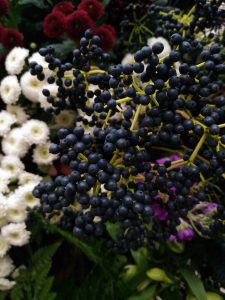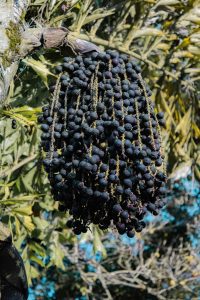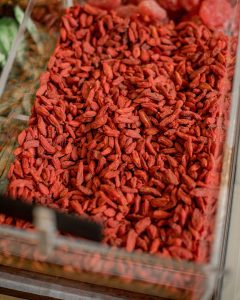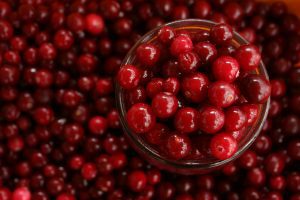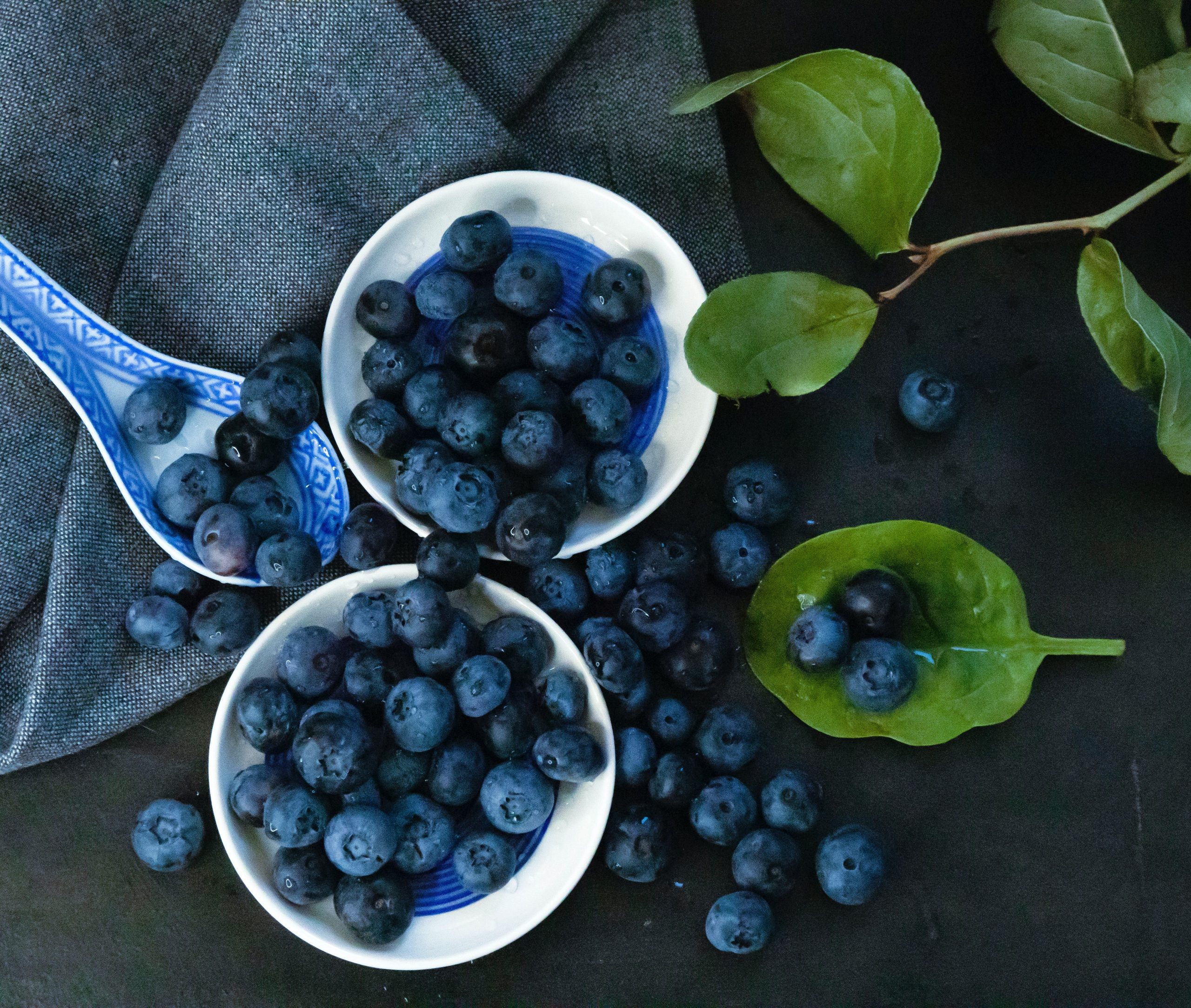
What are Huckleberries?
Huckleberries are small, round, and often dark blue to purple berries that belong to the genus Vaccinium. They are native to North America and are closely related to blueberries. The name “huckleberry” is used for several species within the Vaccinium genus, including the common huckleberry (Vaccinium ovatum) and the black huckleberry (Vaccinium membranaceum).
These berries thrive in mountainous regions, particularly in acidic soils. Huckleberries are prized for their sweet and tangy flavor, resembling a mix of blueberries and raspberries. They are enjoyed fresh, but can also be used in various culinary applications, including jams, jellies, pies, and desserts.
In addition to their delectable taste, huckleberries are rich in antioxidants, vitamins, and fiber, contributing to their potential health benefits. They have been used by Native American communities for both culinary and medicinal purposes. Harvesting huckleberries is often a seasonal activity, and enthusiasts engage in foraging in the wild to collect these flavorful and nutritious berries.
While huckleberries share similarities with blueberries, they have a unique taste and are often smaller in size. Their popularity in regional cuisines and their nutritional profile make them a sought-after ingredient in various culinary creations.
When Do We Eat Huckleberries?
Huckleberries are typically enjoyed when they are ripe and in season, which varies depending on the specific species and geographic location. The harvesting season for huckleberries generally occurs in late summer to early fall, typically from July to September. The timing may vary based on factors such as climate, altitude, and local growing conditions.
Here are common instances when people eat huckleberries:
- Fresh:
- Ripe huckleberries are often eaten fresh, straight from the bush. They have a sweet and tart flavor, making them a delightful snack or addition to salads.
- Baked Goods:
- Huckleberries are frequently used in baking, particularly in pies, muffins, pancakes, and desserts. Their unique flavor adds a delicious twist to various recipes.
- Preserves and Jams:
- Huckleberries are commonly used to make preserves, jams, and jellies. The berries’ natural sweetness and acidity make them well-suited for creating flavorful spreads.
- Sauces and Syrups:
- Huckleberries can be cooked down to make sauces or syrups, which can be drizzled over pancakes, waffles, or desserts.
- Dried Huckleberries:
- Some people enjoy dried huckleberries as a convenient and portable snack. Drying huckleberries helps preserve their flavor for later use.
It’s important to note that huckleberries, like other berries, are best enjoyed when fully ripe. When foraging or purchasing huckleberries, look for plump, dark-colored berries, as they are likely to be at their peak flavor. Harvesting practices may vary, and it’s essential to respect local regulations and ensure sustainable foraging practices if you are collecting huckleberries from the wild.
Health Benefits of Huckleberries
Huckleberries offer several potential health benefits due to their rich nutritional profile and the presence of various bioactive compounds. While scientific research on huckleberries specifically is limited, their similarities to other berries, such as blueberries, suggest potential health advantages. Here are some potential health benefits associated with huckleberries:
- Antioxidant Properties:
- Huckleberries are rich in antioxidants, including anthocyanins, which can help neutralize harmful free radicals in the body and contribute to overall cellular health.
- Vitamins and Minerals:
- Huckleberries contain essential vitamins such as vitamin C, which supports immune function, and minerals like potassium, important for heart health.
- Anti-Inflammatory Effects:
- The antioxidants and phytochemicals in huckleberries may have anti-inflammatory properties, potentially aiding in reducing inflammation in the body.
- Heart Health:
- Huckleberries may contribute to heart health by supporting healthy cholesterol levels and promoting cardiovascular well-being.
- Cognitive Function:
- Some studies on berries, including blueberries (related to huckleberries), suggest potential cognitive benefits, such as improved memory and cognitive performance.
- Dietary Fiber:
- Huckleberries are a good source of dietary fiber, which is beneficial for digestive health, helps regulate blood sugar levels, and supports weight management.
- Potential Anti-Cancer Properties:
- The antioxidants in huckleberries may have anti-cancer properties, although more research is needed to establish specific links.
It’s important to note that while huckleberries offer potential health benefits, individual responses may vary, and scientific research on huckleberries specifically is still evolving. Incorporating a variety of fruits and vegetables into a balanced diet is a recommended approach to maximizing nutritional benefits. If you have specific health concerns or conditions, it’s advisable to consult with a healthcare professional for personalized advice.
Nutritional Value of Huckleberries
Huckleberries are small, flavorful berries that pack a nutritional punch. While the exact nutritional content can vary based on factors such as the specific species of huckleberry and growing conditions, here is a general overview of the nutritional value of huckleberries per 100 grams:
- Calories:
- Approximately 50-60 calories.
- Carbohydrates:
- Huckleberries are rich in carbohydrates, providing around 14 grams per 100 grams.
- Dietary Fiber:
- Huckleberries are a good source of dietary fiber, contributing about 4 grams per 100 grams. Dietary fiber is essential for digestive health.
- Protein:
- Huckleberries contain a small amount of protein, usually around 1 gram per 100 grams.
- Fat:
- Huckleberries are very low in fat, with less than 1 gram per 100 grams.
- Vitamins:
- Vitamin C: Huckleberries are a good source of vitamin C, an antioxidant important for immune function. They may provide 20-40 milligrams per 100 grams.
- Vitamin K: Huckleberries contain small amounts of vitamin K, contributing to blood clotting and bone health.
- Minerals:
- Potassium: Huckleberries provide potassium, an essential mineral for heart health. The exact amount can vary but is generally around 80-120 milligrams per 100 grams.
- Magnesium: Huckleberries contain small amounts of magnesium, supporting various physiological processes.
- Antioxidants: Huckleberries, like other berries, are rich in antioxidants, including anthocyanins, which contribute to their vibrant color and potential health benefits.
It’s important to note that these values are approximate and can vary. Huckleberries are prized not only for their nutritional content but also for their delicious taste. Incorporating a variety of berries into a balanced diet can contribute to overall health and well-being.
Types of Huckleberries
The term “huckleberry” is often used broadly to refer to several species of berries within the genus Vaccinium. Different regions and localities may have their own specific varieties or subspecies of huckleberries. Here are a few common types of huckleberries:
- Mountain Huckleberry (Vaccinium membranaceum):
- Also known as the black huckleberry, this species is native to North America and is found in mountainous regions. The berries are typically dark purple to black and are known for their sweet and tangy flavor.
- Red Huckleberry (Vaccinium parvifolium):
- This species is native to the western parts of North America, including the Pacific Northwest. The berries are usually red or orange and have a tart flavor.
- Evergreen Huckleberry (Vaccinium ovatum):
- Found in western North America, particularly along the Pacific coast, evergreen huckleberries have small, dark berries that can range from black to reddish-purple. They are known for their shiny, evergreen leaves.
- Box Huckleberry (Gaylussacia brachycera):
- While not a true huckleberry (it belongs to a different genus), the box huckleberry is often included in discussions about huckleberries. It is native to parts of North America, and its small, black berries are edible.
It’s important to note that the term “huckleberry” can be used broadly and may encompass various species and subspecies. The specific types of huckleberries found in different regions may have distinct characteristics in terms of flavor, size, and color. When foraging or purchasing huckleberries, local varieties and subspecies may be more prevalent, and each type may have its own unique qualities.
Signs of Ripe, Signs of Raw and Signs of Rotten Huckleberries
Signs of Ripe Huckleberries:
- Color:
- Ripe huckleberries typically display a dark purple to black color. The exact shade may vary, but they should have a rich, deep hue.
- Firmness:
- Ripe huckleberries are plump and slightly soft to the touch. They should yield slightly when gently pressed.
- Clustering:
- Huckleberries grow in clusters, and ripe berries on a given cluster tend to ripen simultaneously. Look for clusters where most berries have reached a dark color.
- Ease of Removal:
- When huckleberries are ready to be harvested, they should easily come off the stem with a gentle touch. If they resist, they may not be fully ripe.
Signs of Raw (Unripe) Huckleberries:
- Color:
- Unripe huckleberries are often green, red, or pale in color. As they ripen, they gradually darken to purple and then black.
- Firmness:
- Unripe huckleberries are typically firmer than ripe ones. If they feel hard when pressed, they are likely not ready for harvest.
- Bitter Taste:
- Unripe huckleberries can have a bitter taste. It’s essential to taste a small berry to ensure it is not bitter before using them in culinary or medicinal preparations.
Signs of Rotten Huckleberries:
- Mold or Discoloration:
- Rotten huckleberries may develop mold or a fuzzy appearance. Discard any berries with visible signs of mold or discoloration.
- Unpleasant Odor:
- Rotten huckleberries may emit an unpleasant or sour odor. If the berries have an off-putting smell, it’s a sign that they may be spoiled.
- Sliminess:
- Overripe or rotten huckleberries can become slimy. If the berries feel excessively slippery or slimy, it’s an indication that they may be past their prime.
When harvesting huckleberries, it’s crucial to ensure that you are correctly identifying the berries and picking only ripe ones for consumption. Proper handling and storage are essential to prevent spoilage. If huckleberries show signs of being unripe or rotten, it’s best to discard them to avoid any adverse effects on flavor or health.
Summary
Huckleberries, small and flavorful berries native to North America, are cherished for their delicious taste and potential health benefits. Common varieties include the mountain huckleberry, red huckleberry, and evergreen huckleberry. These berries, typically ripe from late summer to early fall, boast a dark purple to black color when ready for consumption. Ripe huckleberries are plump, slightly soft, and easily detach from the stem. They are enjoyed fresh or used in various culinary delights such as pies, jams, and desserts. Rich in antioxidants, vitamins, and fiber, huckleberries may offer health benefits, including immune support and anti-inflammatory effects. Harvesters should be cautious to distinguish ripe from unripe berries and avoid any with signs of spoilage like mold or an unpleasant odor.


